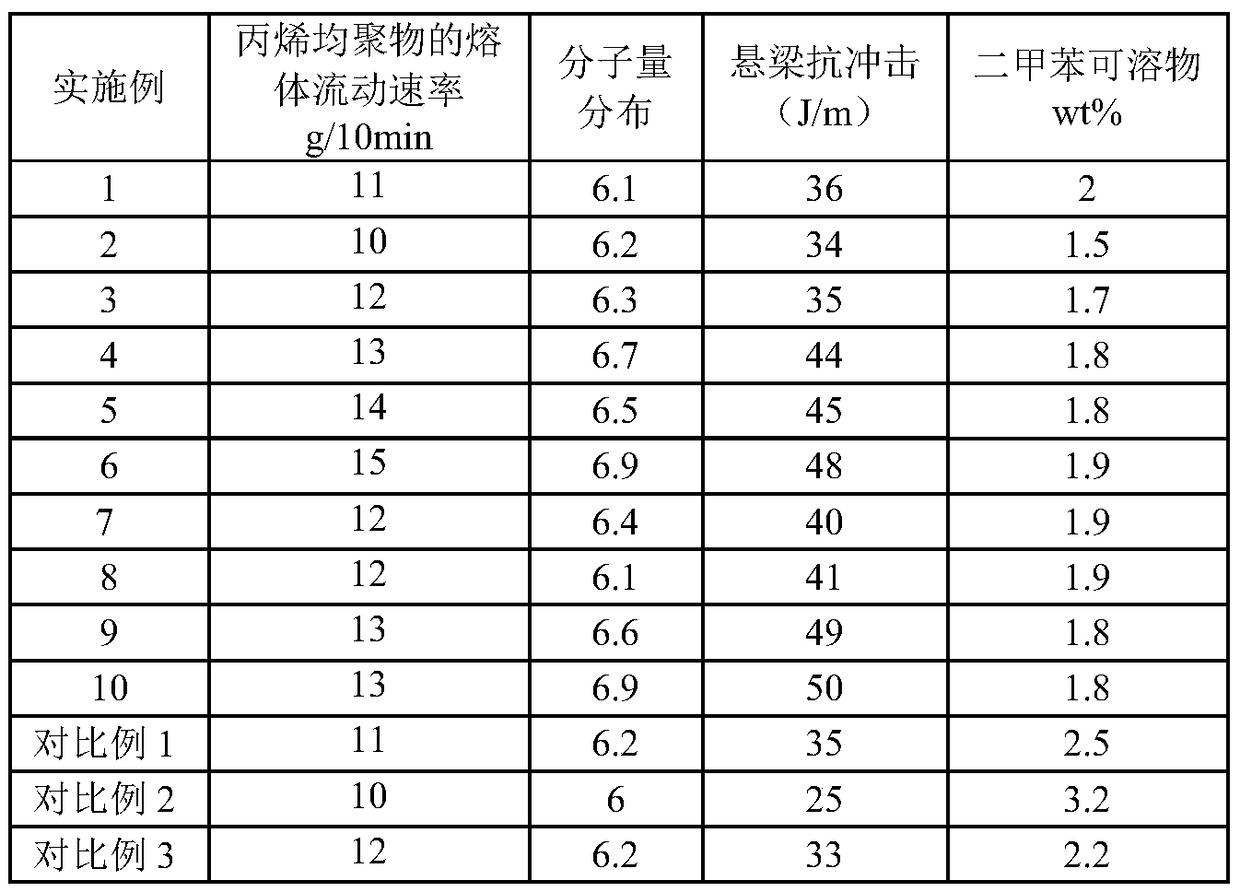Propylene homopolymer and preparation method thereof
A technology of homopolymer and propylene, which is applied in the field of propylene homopolymer and its preparation, can solve the problems that propylene homopolymer cannot be produced, and achieve the effect of enhancing catalytic activity and stereospecificity
- Summary
- Abstract
- Description
- Claims
- Application Information
AI Technical Summary
Problems solved by technology
Method used
Image
Examples
preparation example Construction
[0019] As described in the prior art, the propylene homopolymer prepared by the prior art has the defect that low xylene soluble content and broad molecular weight distribution cannot be achieved simultaneously, which makes the propylene homopolymer product poor in impact resistance. In order to solve the above problems, the present invention provides a method for preparing a propylene homopolymer, comprising the following steps: S1, after mixing a catalyst, a cocatalyst, an external electron donor, hydrogen and propylene, a first polymerization reaction is performed to obtain a first polymerization reaction. A product system, the first product system contains the first polymer; S2, the first product system, hydrogen and propylene are mixed and subjected to a second polymerization reaction to obtain a propylene homopolymer, and the propylene homopolymer contains the first polymer and the second polymer.
[0020] The gas phase polymerization process applied in the present inven...
Embodiment 1
[0035] The first polymerization reaction and the second polymerization reaction were carried out in two reactors, respectively. The CD catalyst, dicyclopentyldimethoxysilane and triisobutylaluminum, as well as hydrogen and propylene are mixed in the first reactor, and the first polymerization reaction is carried out under the conditions of a reaction temperature of 60° C. and 2.5 MPa to form The first product system. Among them, in terms of the molar ratio of Al element to Si element, the dosage ratio of the cocatalyst to the external electron donor is 15. During the first polymerization reaction in step S1, the first product system is obtained after monitoring the melt flow rate of the first polymer to make it reach 0.5 g / 10min.
[0036] Then, after the first product system, hydrogen and propylene are mixed in the second reactor, the second polymerization reaction is carried out under the conditions of a reaction temperature of 70° C. and 2.0 MPa to obtain a propylene homopo...
Embodiment 2
[0038] The first polymerization reaction and the second polymerization reaction were carried out in two reactors, respectively. The CD catalyst, tri-n-butylaluminum, dicyclopentyldimethoxysilane, and hydrogen and propylene are mixed in the first reactor, and the first polymerization reaction is carried out under the condition that the reaction temperature is 70° C. and 2.0 MPa to form The first product system. Wherein, in terms of the molar ratio of Al element to Si element, the dosage ratio of the cocatalyst to the external electron donor is 1. During the first polymerization reaction in step S1, after monitoring the melt flow rate of the first polymer to make it reach 4.0 g / 10min, the first product system is obtained.
[0039] Then, after mixing the first product system, hydrogen and propylene in the second reactor, the second polymerization reaction is carried out under the conditions of the reaction temperature of 60 ° C and 2.5 MPa, and then the propylene homogenate is o...
PUM
| Property | Measurement | Unit |
|---|---|---|
| melt flow index | aaaaa | aaaaa |
Abstract
Description
Claims
Application Information
 Login to View More
Login to View More - R&D
- Intellectual Property
- Life Sciences
- Materials
- Tech Scout
- Unparalleled Data Quality
- Higher Quality Content
- 60% Fewer Hallucinations
Browse by: Latest US Patents, China's latest patents, Technical Efficacy Thesaurus, Application Domain, Technology Topic, Popular Technical Reports.
© 2025 PatSnap. All rights reserved.Legal|Privacy policy|Modern Slavery Act Transparency Statement|Sitemap|About US| Contact US: help@patsnap.com

